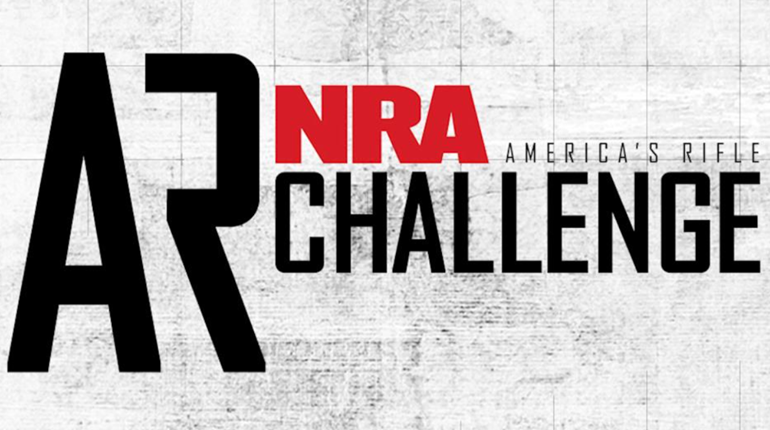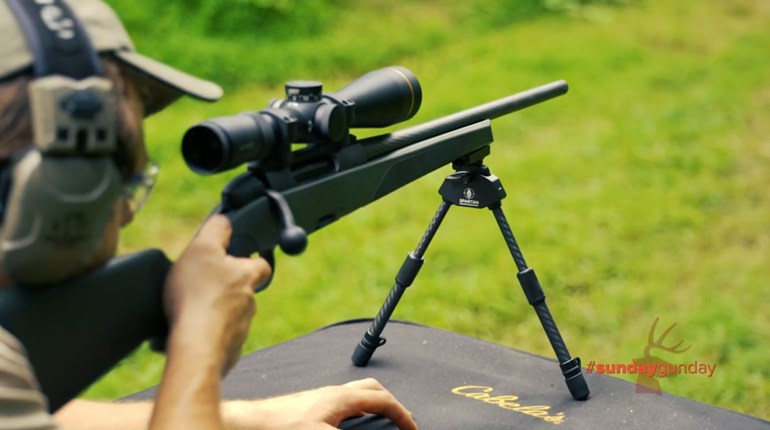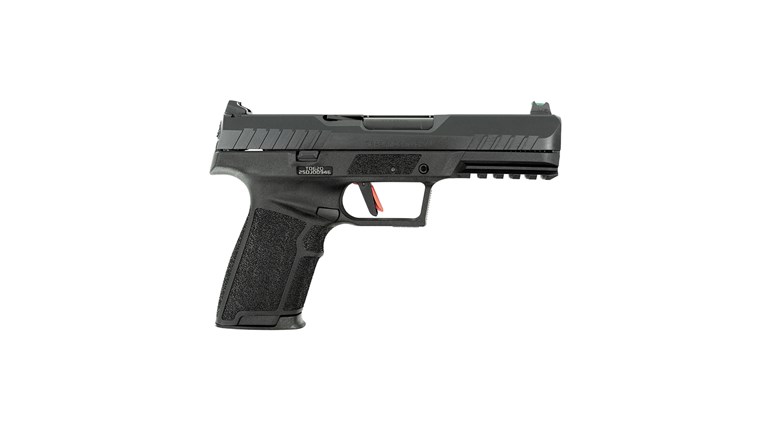
The AR-15 has been embraced by millions of Americans as their firearm of choice, and the NRA America’s Rifle Challenge program (ARC) is giving them a fresh and dynamic way to put those rifles to good use. NRA America’s Rifle Challenge is not just about marksmanship, it’s also about accessibility, community and having fun on the range.

Here’s an inside look at the NRA ARC program, how it’s designed, and why I think it will become one of the most approachable competition shooting disciplines in the country.
FUN AND ACCESSIBLE
America’s Rifle Challenge is an opportunity for people to use America’s rifle—the AR-15—in a fun and competitive environment. Whether you’re brand new to shooting or a seasoned competitor, ARC offers a welcoming and structured way to build your skills and enjoy your rifle in a safe setting.

The NRA ARC program emphasizes basic marksmanship with room to grow. Shooters can start small and simple, and then work their way up to more advanced stages as they get more comfortable and capable with their rifles.
“It’s really a game for everybody,” NRA Executive Director of General Operations Josh Savani said. “Whether you’ve just bought your first AR-15 or you’ve been shooting Three-Gun for years, there’s a place for you in the NRA ARC program.”

One of the biggest barriers to entry in competitive shooting is the gear. NRA aims to eliminate that problem with America’s Rifle Challenge.
“All you really need,” Savani explains, “is a safe, functional AR-15, a sling, two magazines and eye and ear protection. That’s it. The idea is to make the sport as accessible and unintimidating as possible, particularly for those new to shooting sports.”

NRA America’s Rifle Challenge is structured into two main levels, along with a Two-Gun component that incorporates pistol shooting with the long guns. In addition, all rifles in NRA ARC competition must be equipped with a sling.
LEVEL ONE
Designed for basic square ranges, Level One places an emphasis on fundamental rifle skills—think safe handling, positional shooting and target engagement within a contained environment. It’s ideal for new shooters or those unfamiliar with competitive formats. A shoulder-to-shoulder match fired under time constraints from standing, sitting, kneeling and prone positions at 10, 25, 50 and 100 yards, competitors will face steel targets, as well as the newly developed NRA ARC-L1R cardboard target.

LEVEL TWO
For those ready to up the ante, ARC Level Two brings movement, distance and complexity into play. It’s held on more dynamic ranges—shooting bays or wideopen terrains—and includes shooting while moving and from barricades, engaging targets at distances of up to 500 yards and navigating more tactical scenarios. Stage planning is key here, as competitors will find themselves shooting from different positions and traversing obstacles, with increased round counts over ARC Level One stages.

TWO-GUN
Geared towards advanced competitors, this ARC component features combine rifle and handgun stages. This format introduces additional challenges like firearm transitions and allows for shooting steel targets at shorter distances—something not typically done with rifles due to safety concerns. Safety is paramount—pistols are holstered and rifles are unloaded until they need to be fired. Before transitioning from rifle to pistol or vice versa, you must show your firearm is clear to the Range Officer.

For those who don’t feel ready for an ARC Level one match, NRA wants to give them an option to train and attend their first competition feeling prepared. To support new shooters, the NRA is developing an ARC-specific training curriculum. This course will be delivered through NRA’s extensive network of certified instructors, ensuring that newcomers have a place to learn and build confidence before jumping into a match.
Additionally, the NRA ARC program is suppressor-friendly in states where they are legal. Suppressor use in competitions has benefits for both shooters and ranges. For starters, suppressors can help reduce noise complaints in increasingly urbanized areas, making it easier for ranges to stay open and operate smoothly. Besides that, suppressors make shooting more enjoyable, both for the shooter and anyone nearby. The NRA has long advocated for deregulation of suppressors through NRA-ILA, recognizing their safety and environmental benefits.

2025 CAMP ATTERBURY NRA ARC MATCH
In April, the NRA conducted an America’s Rifle Challenge competition at Camp Atterbury, Ind., as an introduction of the program to the public. The match featured ARC Level One, Level Two and Two-Gun stages for the benefit of new and experienced shooters alike. I was there and while the weather wasn’t exactly great, with showers and heavy wind at times, competitors I talked to were embracing the NRA ARC program and everything it entails.
The match was well attended, and boasted some familiar names, including Michael Bane of “Shooting Gallery” fame.
“It is a great and fascinating match. You’re really going to like it,” Bane said. “When I first talked to NRA EVP and CEO Doug Hamlin, I told him the National Rifle Association would be judged not by what it said, but what it does. America’s Rifle Challenge is an important part of that new commitment. ARC tests all the basic skills of shooting a rifle—standing, kneeling, sitting, prone, barricades—and sometimes up close. More than that, it’s fun.”

The event also featured a complimentary BBQ lunch for competitors and their guests, fostering a sense of community among participants. Besides Bane and his omnipresent camera, media coverage included filming by “American Rifleman TV” (Jake Stocke and me) and John Scoutten of “Shooting USA.” Competitors were interviewed, along with match staff and spectators, capturing the event’s dynamic atmosphere.
Winning the Level One title was Jacob Black, who walked away from Camp Atterbury with the title after posting a score of 146.19. In Level Two, the top shooter was Jonathan Cowen with 271.81. In addition, Kolton Kronk claimed the High Junior honor in Level Two with 563.64.
NRA ARC APRIL 2025 LEADERBOARD

WHY SHOOT ARC?
So what if you’re on the fence? Why sign up for a NRA America’s Rifle Challenge event? Well, it’s fun. It’s one of the best ways to enjoy your firearm, spend time with friends and improve your marksmanship skills. Plus, competition naturally pushes shooters to get better. A little friendly rivalry makes you want to train more, shoot more and just become a better marksman overall.
More importantly, the NRA America’s Rifle Challenge program represents something bigger—it’s a gateway for millions of AR-15 owners to exercise their Second Amendment rights in a shooting discipline that’s as rewarding as it is enjoyable.
NRA America’s Rifle Challenge is more than a match—it’s a movement. Whether you’re just unboxing your first AR or you’re a seasoned competitor looking for a new thrill, NRA welcomes you to the line at an ARC match.
The NRA plans to release the full America’s Rifle Challenge rulebook and requirements for clubs and ranges to hold their own ARC matches later this year.
Ready to pull the trigger? Visit arc.nra.org for more information on how to get involved.
ARC GEAR

With a mix of basic drills to dynamic stages, NRA America’s Rifle Challenge is redefining modern marksmanship—from first-timers to seasoned competition shooters.
While one goal is to attract new shooters using rifles and gear they already own or can borrow from a friend, the ARC program also welcomes longtime competitors. For example, NRA General Operations Executive Director Josh Savani has been a competition shooter for many years in different disciplines. He is a big proponent of the ARC program and even competed at the Camp Atterbury match last April.

Savani was shooting a parts gun with an Aero receiver, Daniel Defense barrel, Geissele MK4 handguard, Magpul Moe SL-K stock, Reptilia Grip, Edgar Sherman sling and Magpul Gen3 PMAG magazines. On top of his rifle was a Vortex Razor HD Gen II-E 1-6X 24 mm optic. Additionally, he was shooting with a YHM Turbo K suppressor mounted to the rifle’s barrel.
Show me more about the NRA ARC program.

































